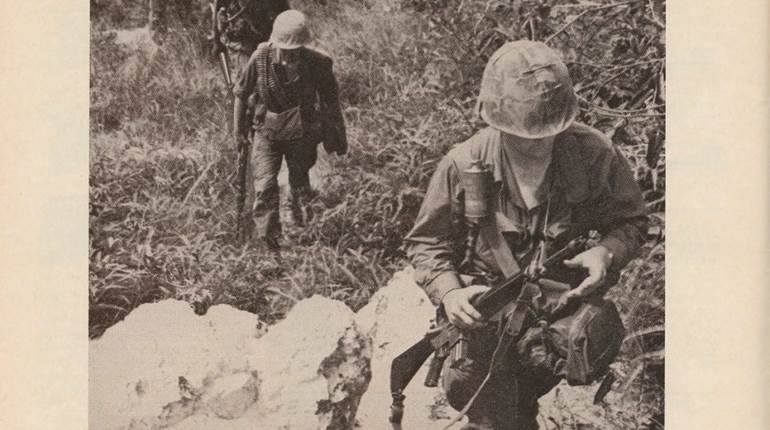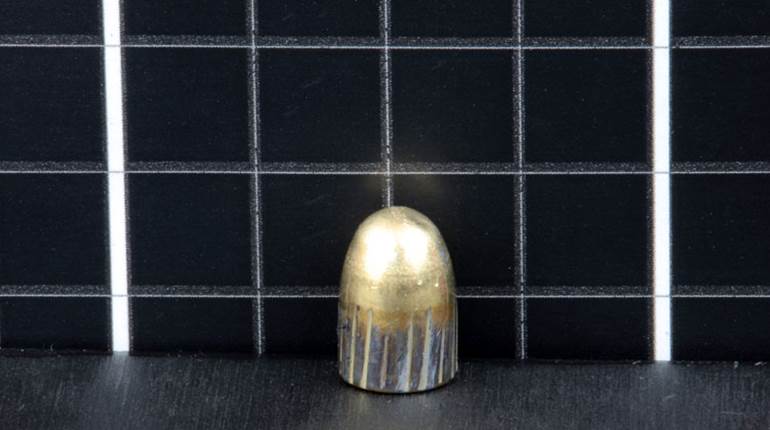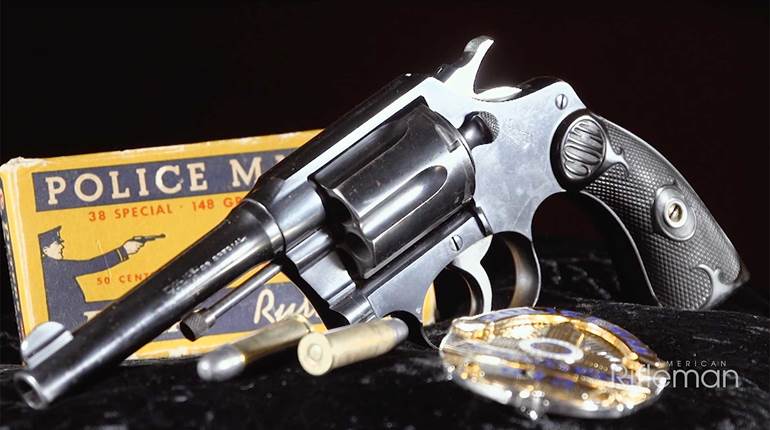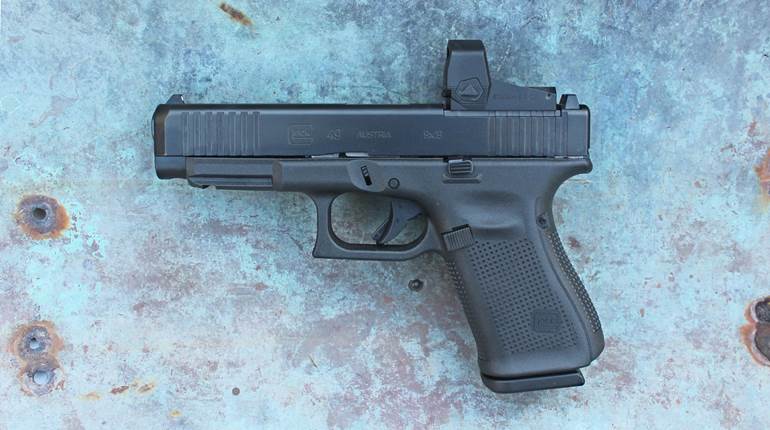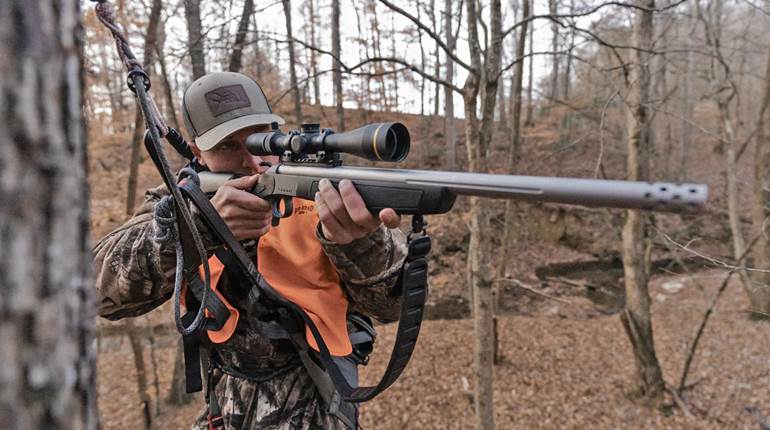
It’s unlikely that any other U.S. military unit ever fielded such an array of weaponry as did the Military Assistance Command Vietnam, Studies and Observations Group. Behind that innocuous name, MACV-SOG ran top-secret, covert operations across Southeast Asia during the Vietnam War, especially U.S. Army Special Forces-led reconnaissance missions along the enemy’s Ho Chi Minh Trail road network in Laos, into his sanctuaries in Cambodia, and sometimes into North Vietnam, itself. 
These SOG recon teams, usually four to six natives led by two or three American Green Berets, roamed deep behind enemy lines, searching out—sometimes attacking—North Vietnamese truck parks, ammunition dumps, storage sites, truck convoys, command centers and the base camps where enemy units refit between battles in South Vietnam.
Deniability
Since Hanoi insisted it had no troops in “neutral” Laos or Cambodia, the United States, too, denied that SOG operations were underway. To support this deniability, recon teams were required to go “sterile”—meaning no ID or dog tags, unmarked or non-U.S. uniforms, and unattributable arms. Thus, SOG’s armory stocked many foreign firearms with which a team leader armed his men according to how he saw fit to accomplish each mission.
Initially, SOG’s primary weapon was the 9 mm Luger Karl Gustav Model 1945 submachine gun, nicknamed the “Swedish K.” Obtained through the Central Intelligence Agency, these untraceable guns sported a pale green enamel finish, a side-folding stock and a 36-round magazine. The typical combat load was 13 magazines—one in the gun and 12 more in pouches—for some 468 rounds. That may seem like a lot, but SOG teams often fought all-day, running gunfights against untold enemy pursuers.
Eventually the Swedish K’s 9 mm ball cartridge was found inadequate for knocking enemies down and keeping them down. Many teams up-gunned to the more robust 7.62x39 mm, Chinese Type 56 AKM with a fixed or folding stock. The AKM was not without its own shortcomings: it was slow to reload since the bolt did not lock open with the last round, and its wooden fore-end—oil-saturated by repeated cleanings—could become too hot to grasp. Still, it was an improvement.
Some AKM-armed teams added a degree of deception, disguising themselves in North Vietnamese uniforms. During a chance meeting, the enemy hesitated to engage a masquerading team, giving the SOG men a brief advantage. Had they been captured in enemy uniforms they could have been executed as spies; however, not one of SOG’s 57 Missing in Action (MIA) Green Berets—nearly all of them undisguised—came back as a live prisoner. The issue was moot. 
Some arms were old enough to be deniable, allowing World War II veterans to carry their favorite firearms. For instance, First Sergeant Lionel Pinn, a cigar-chompin’ World War II Ranger, proudly packed an M1A1 Thompson submachine gun. Master Sergeant Charles “Pops” Humble, a veteran of the 1st Special Service Force, wanted a German Schmeisser; SOG got him one.
Foreign arms figured in SOG’s night parachute infiltrations—the world’s first combat skydives. Captain Jim Storter armed his recon skydivers with Fabrique Nationale-made Uzi submachine guns because they, “fit nicely strapped atop the reserve ‘chute,” a consideration where compactness and a streamlined load mattered. His team also packed slim Walther PPK pistols which, like the Uzis, had detachable suppressors. Some SOG skydive teams also carried golf-ball-size V-40 Mini Grenades, acquired secretly from the Netherlands, which weighed just 3.5 ozs.
Foreign handguns included the .25-cal. “Baby” Browning semi-automatic, complete with a wallet-like concealment holster as a last resort gun. But SOG’s most ubiquitous foreign handgun was the 9 mm Luger Browning High Power, favored for its 13-round magazine capacity. Several dozen SOG High Powers came home as chromed, boxed presentation pistols, awarded by SOG’s commander (“Chief SOG”), to his most accomplished team leaders.
The CAR-15
By 1967, the enemy had captured enough U.S. weapons in South Vietnam that weapon deniability was relaxed for missions into Laos, although the requirement continued another two years for Cambodia. Teams could now carry M16s, but they soon were rearmed with what would become SOG recon’s trademark arm—the CAR-15. Officially dubbed the XM177, the CAR-15 was a submachine gun version of the M16 and grandfather of today’s M4 carbines. Available in two barrel lengths—a 10" on the E1 version and an 11.5" on the XM177E2—it featured a retractable stock, a short, rounded handguard and a distinctive 4.2" compensator-flash suppressor. SOG’s recon companies were the war’s only units armed entirely with CAR-15s.
As with all U.S. units, during much of the war SOG was stuck with ill-fitting M14 pouches to hold M16 magazines. Many recon men opted for old BAR belts, whose pouches perfectly held four 20-round magazines, or stretched canteen covers to accommodate six magazines. Frustrated by SOG’s inability to supply 30-round magazines, a number of team leaders purchased them through a Guns & Ammo advertisement, outfitting each man with one 30-rounder. As his first magazine, this typically contained all tracer rounds for psychological effect.
Suppressed Long Guns
SOG stocked many suppressed submachine guns and rifles, useful for chance contacts, ambushing trackers, removing sentries and seizing prisoners. Only SOG’s Uzis had detachable suppressors, the rest having integral ones whose weight and length affected their handling characteristics. The Swedish K’s integral suppressor, for example, added 6" to its length, which made it barrel-heavy; however, it was especially accurate.
Some recon men preferred the .45-cal. suppressed M3A1 “Grease Gun,” developed by the World War II Office of Strategic Services (OSS), predecessor to today’s CIA. Offering a very controllable 450-r.p.m. rate of fire—making single-shots possible—its suppressor boosted the gun’s weight by 3 lbs., and required cleaning the tube’s metal screen “wafers” to maintain effectiveness.
SOG’s quietest long gun was the Sionics Silent Sniper, an M1 carbine converted to 9 mm Luger and transformed from semi-automatic to a straight-pull. Outfitted with a barrel-length suppressor, telescoping wire stock and 4X scope, its closed bolt firing precluded any mechanical “clacking” while no sound of gas blowback escaped at the breech.
Such “clacking” seemed the only sound you heard when firing the Sten Mk. IIS suppressed submachine gun. Developed in 1940 by the British Special Operations Executive or SOE—whose secret agents operated in Nazi-occupied Europe—the Sten’s loose tolerances kept it firing even when filthy, but limited its accuracy to 8" groups at 50 yds.
The problem with all suppressed submachine guns was their pistol rounds’ minimal deadliness; not only was that a disadvantage in a firefight, but (as I learned) amid the din of gunfire the enemy heard no muzzle blast to deter his assault or compel him to seek cover. Instead of carrying a suppressed guns as their primary weapons, many SOG men instead wielded CAR-15s or AKMs, and kept the Stens disassembled into their four major groups—receiver, barrel, magazine and stock—and stowed them in their rucksacks until needed.
As for suppressed M14s and M16s, SOG had them but lacked subsonic ammunition. Medal of Honor recipient Franklin D. Miller and I tested a suppressed M16 and determined that in short-range shootouts its noisy supersonic “crack!” outweighed the benefit of its reduced muzzle blast. Some men thought otherwise, especially when using a suppressed XM21 sniper rifle at greater distances. 
Suppressed Handguns
Although of very limited range, suppressed handguns saw considerable action. SOG’s quietest pistol by far was the .32 ACP Welrod, another product of the World War II British SOE. Its minimalist design—a tubular suppressor-barrel-action, a bent metal rod for a trigger and a rubber-covered Colt M1903 pistol magazine for a grip—didn’t even look like a gun. Like the Sionics carbine, the Welrod was a bolt-action repeater, operated by rotating its knurled end with the palm of the hand. Of limited accuracy and range, the Welrod was more suited to assassinations in wartime Europe than combat in Southeast Asia. 
SOG’s most popular suppressed pistol was the .22-cal., High Standard H-D semi-automatic. Another World War II OSS development, its 6½" barrel was fitted with a 73/4" suppressor that eliminated muzzle flash and achieved 90 percent noise reduction. It was used primarily to capture prisoners, the plan being to disable the target with one, near-silent, well-placed shot. This sometimes worked and sometimes did not, igniting a conventional gunfight.
Other suppressed pistols included Brownings, Walthers and Berettas, but SOG’s most revolutionary pistol—mistakenly acquired as “silent”—was the 13 mm Gyrojet Rocket Pistol. Constructed of plastic and stamped steel with the heft of a cap gun, the six-shot Gyrojet emitted a piercing, “whoosh!” when fired. Its thumb-size, solid-fuel rocket was spin-stabilized by two canted nozzles and generated almost no recoil. In SOG tests, that rocket punched through 3/4" plywood and then pierced one side of a water-filled 55-gallon drum to dent the opposite side. Although slow to reload and of limited accuracy, the Gyrojet saw combat service, especially in the hands of 1st Lt. George K. Sisler, SOG’s first Medal of Honor recipient, who had one when he died fighting off an enemy platoon; his Gyrojet was recovered and may have been the same pistol Medal of Honor recipient Franklin Miller used later.
Robert Graham, leader of Recon Team Pick, carried into combat SOG’s most outlandish “silent” weapon. A native Canadian and bow hunter, Graham had a 55-lb. bow mailed from home with broadhead-tipped arrows, which he indeed let loose during a fight in Cambodia. No prisoner resulted, but it did yield one of SOG’s most unbelievable war stories.
Modified Weapons
SOG’s Green Berets constantly tinkered with their firearms, often shortening barrels to improve handiness. Medal of Honor recipient Bob Howard, for example, sometimes toted a compact, selective-fire M14A1 rifle, its barrel and flash suppressor chopped by 8" and a handgrip installed below the forearm. In it, Howard fired 7.62 mm M198 duplex cartridges, each containing two stacked 84-gr. Spitzer bullets with respective muzzle velocities of 2700 and 2200 f.p.s.. In effect, this doubled his M14’s output to 40 rounds per magazine. 
Sawed-off shotguns saw SOG service, too, primarily the Remington Model 870. One SOG recon skydiver, Sammy Hernandez, somehow got his hands on a sawed-off Winchester Model 1897, which he strapped aside his body for a night jump into Laos. Another SOG recon man carried a sawed-off Browning A5 semi-automatic into Laos, which proved his undoing; it was fast to fire but slow to reload, and he was shot dead while reloading.
The belt-fed M60 machine gun, too, was much modified. Poorly balanced, heavy, and somewhat awkward to wield, Special Forces weapons men completely removed the buttstock, capped it, and then shortened the 22" barrel, eliminated the bipod and installed a pistol grip below the gas tube, which notably shortened it and cut its weight by 5 lbs. (Three decades later, similar features were incorporated into the gun’s M60E4 version.)
However, SOG’s most impressive M60 modification—dubbed the “Death Machine”—was a 500-round drum fitted inside the gunner’s rucksack, connected to his gun with a 5-ft., aircraft-type articulated feed belt. Fabricated at the China Lake, Calif., Naval Weapons Center, its total weight including the gun and ammunition was just short of 90 lbs., requiring a Rambo-sized man to carry it. Best suited to raids, recon teams rarely packed the Death Machine.
But many teams did carry another light machine gun, the Communist Bloc RPD. Modified by Special Forces weapons men, the RPD’s barrel and butt were chopped, reducing its length to 31", shorter than a Thompson submachine gun. This also reduced the RPD’s weight to 12 lbs. and balanced it so well that you could practically write your name with it. SOG men also modified its 100-round belt to hold 125 rounds, and inserted a slice of linoleum in the drum to eliminate any rattle. Firing the full-power 7.62x39 mm AK round, the RPD was SOG’s deadliest small arm.
Sniper Rifles
Because SOG recon’s primary duty was intelligence gathering, there were few planned sniping missions, which would have compromised a team’s presence with the first shot. However, there was no shortage of sniper rifles when the need arose. 
SOG’s most accurate sniper weapon was the heavy-barreled, Remington Model 700 rifle, in 7.62x51 mm NATO (.308 Win.), with a Redfield 3-9X Accu-Range scope, similar to the system issued to Marine Corps snipers. SOG recon was the only Army unit in Vietnam armed with the Model 700.
The M14-based XM21 Sniping System, too, was in SOG’s armory, many of them suppressed. These definitely saw combat service, especially for recon teams in central Laos where the jungle opened up. Special Forces Sgt. Kevin Smith used an XM21 while manning a roadblock overlooking Laotian Highway 922 and made a confirmed 1,000-yd. shot, as well as a number of other kills.
The Korean War-era M1D Sniper Rifle, topped by a 2.5X M84 scope, was considered outmoded by many, but SOG old hands who’d been raised on the M1 rifle thought it an excellent rifle and its .30-’06 Sprg. cartridge more suited to long-range sniping than the 7.62x51 mm.
Quite likely the first-ever flattop AR was an SOG-modified M16. Topped by an M84 scope, SFC J.D. Bath took the experimental sniper rifle to a Laotian mountaintop in early 1967, but no enemy appeared within 5.56x45 mm range. Although promising, that was that rifle’s only known combat service. 
Exploding-Projectile Weapons
Some team leaders believed that the slow-firing, single-shot M79 Grenade Launcher reduced their teams’ firepower. Rearming their two grenadiers with CAR-15s, they mounted still-experimental Colt XM148 grenade launchers on their short-barreled CARs, which required a bit of jury-rigging. Later, these were replaced with XM203 grenade launchers. However, all this bulk degraded the performance of both the CAR-15 and the launcher, which was unacceptable to other team leaders. Instead, they sawed off the M79’s butt and barrel into a “pistol,” which was carried unloaded and snapped into men’s web gear. Thus, 40 mm fire was still available when needed while it freed up everyone to carry CAR-15s.
SOG’s most unusual grenade launcher was an experimental pump-action, four-shot, that functioned like an oversized Winchester Model 12 shotgun. Developed by the Naval Weapons Center at China Lake, Calif., it weighed 10.2 lbs. and measured 34½" overall. It wasn’t too heavy, but notably bulky, poorly balanced and prone to short-stroking.
SOG lost more men to the blast and fragments of enemy RPG rockets than to any other weapon. Attesting to this lethality, several recon teams replaced their M79s with RPG-2 launchers, which fired the Chinese B-40 rocket. In SOG’s hands, it proved just as deadly. 
Some considered the RPG too heavy a weapon for a small recon team, yet a few team leaders went a step further and also toted a 60 mm mortar. Normally found with a 120-man infantry company, it was the last thing the North Vietnamese expected in a SOG team. The 60 mm tube was carried by one man, with about 20 rounds distributed among his teammates. Recon Teams, such as Joe Walker’s RT California and Ed Wolcoff’s RT New York, regularly packed a 60 mm mortar, along with sawed-off RPD machine guns and RPG rocket launchers. Unsurprisingly, these were called “heavy” teams.  ultimate
ultimate
Whether heavy or just a half-dozen men, these SOG teams raised such havoc behind enemy lines that the North Vietnamese diverted 50,000 troops from the battlefield to rear area security. However, the cost was significant: SOG lost 243 Green Berets, which included 10 recon teams that went missing while another 14 were overrun. In 2001—after its covert missions were declassified—SOG received the Presidential Unit Citation for, “Extraordinary Heroism … . while executing unheralded top secret missions deep behind enemy lines across Southeast Asia.”
This article includes images from Jason Hardy’s six-volume series on SOG Teams, which can be found at specialforceshistory.com and from Maj. Plaster’s Book, SOG: A Photo History of the Secret Wars, at ultimatesniper.com












